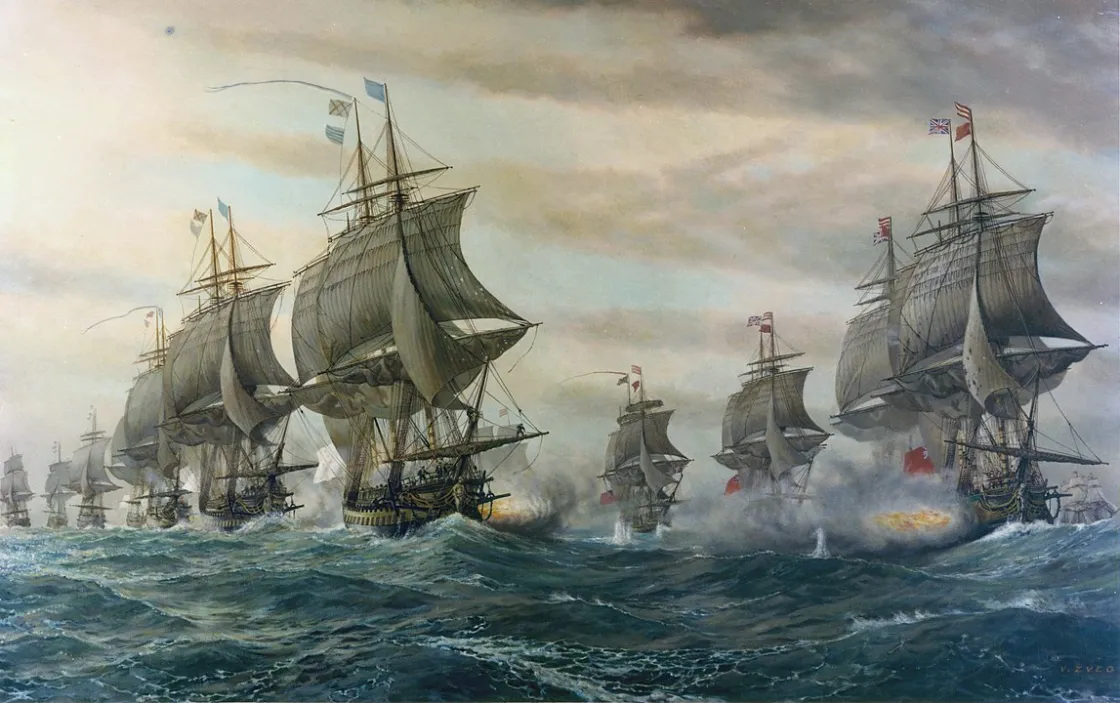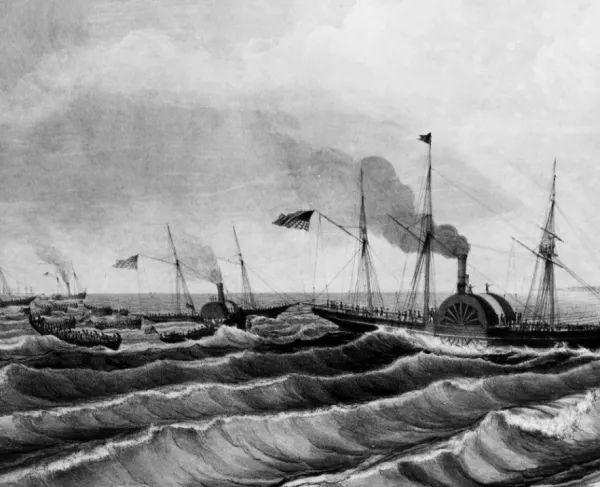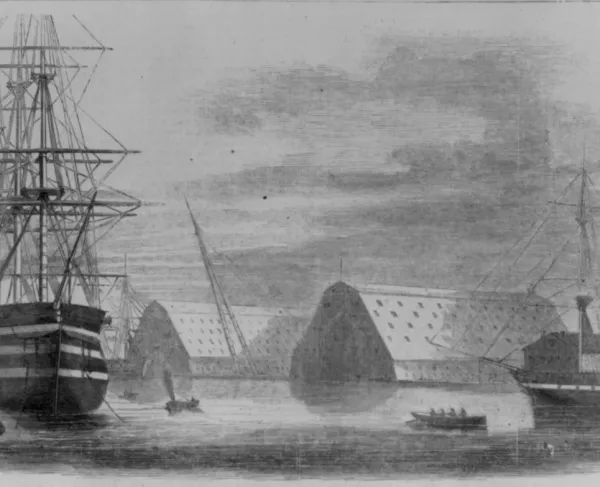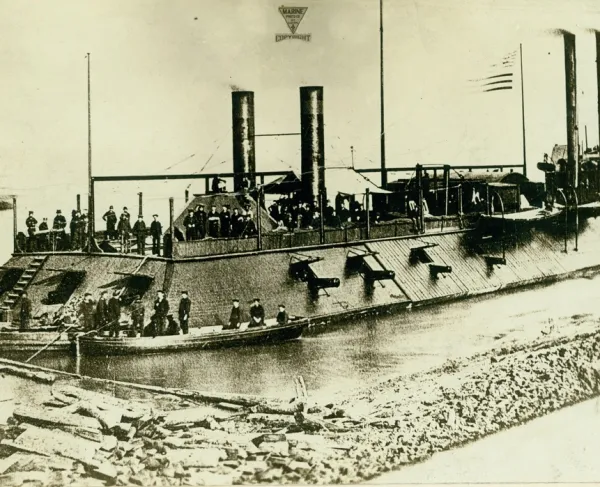
"Schooner Ajax leaving Delaware." The New York Public Library Digital Collections. 1838 - 1839.
The majority of the American Revolution was fought on land, but the action on the seas had significant impacts on land battles and the outcome of the war. While France and Spain had substantial navies, the British Royal Navy was the premier ruler of the seas during the war. Britain’s superior naval power controlled the colonies’, ability to conduct international commerce and trade. The lack of industrial capacity in North America meant the United States depended on friendly nations to trade with them for supplies once the war started.
The new United States created their own navy on October 13, 1775. Relying primarily on commerce ships transformed into warships, the American Navy understood they could not go toe to toe with the Royal Navy. Instead they focused on raiding British shipping and defending their trade routes. These privateers kept the Royal Navy busy and allowed Americans to collect much-needed supplies captured British ships. The British navy’s superior strength and resources required the Americans to adopt new naval strategies.
Eighteenth-century naval tactics emphasized maneuverability and firepower. This was a departure from the “galley warfare” style used previously, which involved direct combat between two ships, usually attempting to board the other ship and conduct hand-to-hand combat. The size of wooden sail ships had grown substantially in the eighteenth century. European naval powers built larger frigates with multiple decks of heavy guns. These larger ships utilized concentrated fire at close range. The sailing technology and ship construction gave these larger ships more speed and maneuverability.
In addition to technological innovations, the eighteenth century saw changes in naval warfare tactics. Developed in the mid-seventeenth century, the preferred formation for naval combat was “ship of the line warfare.” This allowed all the ships to follow one another, with their guns facing the enemy line unobstructed. The ships in the line were normally spaced from 100 to 200 yards apart, but the closer the better. This allowed them to easily communicate and function as one unit. The enemy line’s ships would be in close range as naval guns had a shorter range than field artillery.
Captains preferred to use their firepower to “break the line” rather than board the enemy’s ships. The goal was to disrupt the enemy’s line of ships to break up their cohesion. If they could divide up the enemy’s ships, they could focus their firepower on those breakaways, which gave them a better opportunity to sink them. Another aim, though rare in practice, was to “double” the fire, having ships fire broadsides on both sides of an enemy ship simultaneously.
In most naval battles, the ships that held the “weather gage,” meaning that they were upwind of their enemy, had the advantage. Holding the weather gage meant you decided when to engage the enemy and that you could maneuver your towards any downwind point. Without holding the weather gage, ships could not sail against the wind to reach their opponent.
By the time of the American Revolution, French crews were trained to fire into the rigging, while the British preferred to fire into the hull of an enemy ship. While both strategies had their advantages, a ship without its rigging and sails could not maneuver and was vulnerable to capture. Firing into the hull of a ship had a more immediate impact and could force the sinking of a ship. Due to the nature of these tactics, naval battles on open oceans were long affairs, sometimes covering hundreds of miles and days of maneuvering.

During one of the more famous naval battles of the American Revolution, the Battle of the Capes, British and French ships fought off the coast of Virginia near the mouth of the Chesapeake Bay on September 5, 1781. Actual combat only lasted a few hours, but the two lines of opposing ships drifted southward along the North Carolina coast for four more days. The French eventually broke and headed back to the Chesapeake. This battle shows the vast time and space over which these naval battles could occur.
Though these tactics were the standard of the era, the American Navy was rarely able to engage in this type of naval warfare. They did not have the ships or firepower to stand up to the British Royal Navy. The most impactful strategy the Americans implemented was their privateering enterprises. Privateers were privately owned merchant ships refitted for military use. They were commissioned by the United States to attack British commerce ships. There were an estimated 2,000 privateers in service for the Americans during the war. Privateers captured around 1,599 British ships during the war, which had a significant impact on the British economy and insurance rates for the ship captains.
In 1779 France and Spain (followed by the Netherlands in 1780) joined in on the conflict on the side of the Americans. This forced the British navy to focus their power on trade routes, specifically the rich West Indies. British naval support for its forces in North America waned as the conflict went global.
Though the American Navy was never able to stand up directly to the British Royal Navy, through innovation and strong leadership, the American Navy achieved some successes during the war. They leveraged partnerships with the French Navy and then later the Spanish Navy to contest the British Navy’s control of the seas. Great Britain continued to rule the oceans during and after the war but began to feel the negative impact of almost continuous warfare. In the years after the American Revolution, both navies continued to find themselves as adversaries on the seas.
Related Battles
210
336





